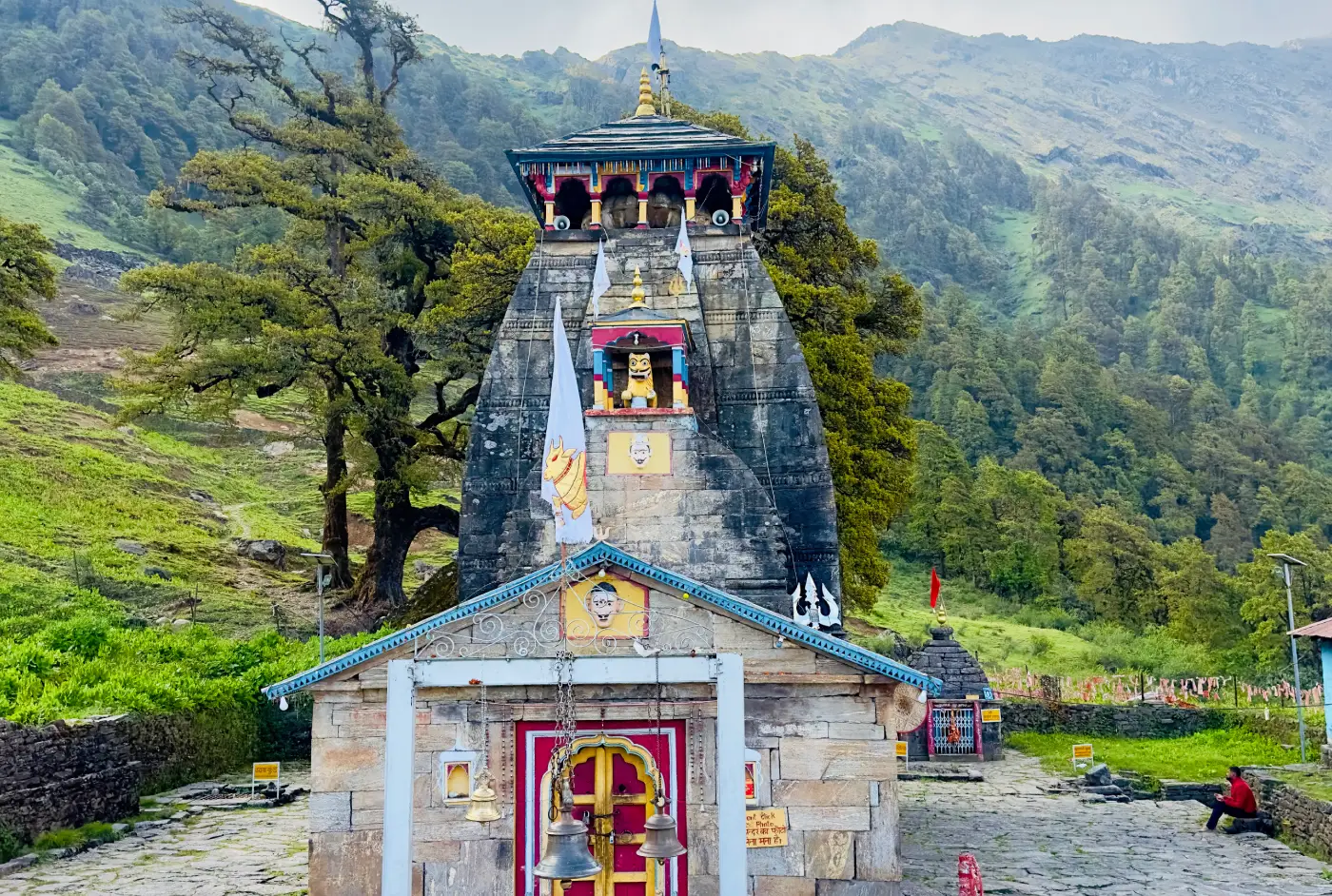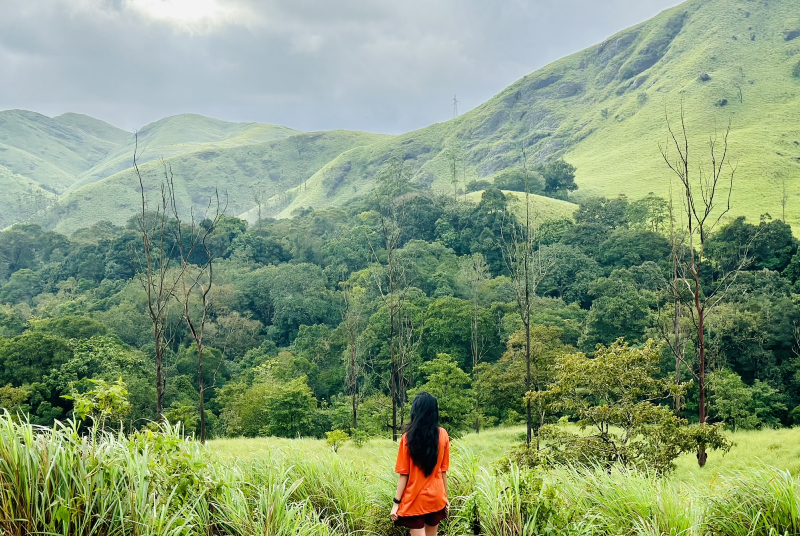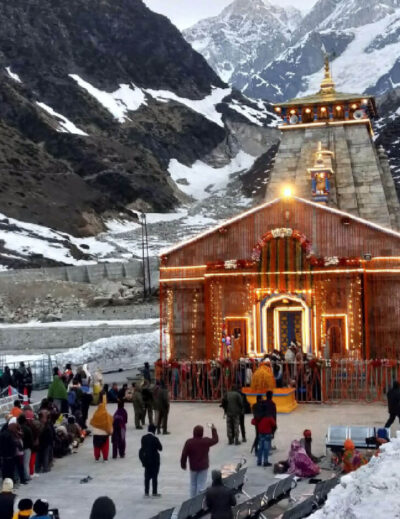
Madhyamaheshwar Trek Guide: Everything You Need to Know
Nestled quietly in the lap of the Garhwal Himalayas, Madhyamaheshwar Temple is one of the five sacred shrines collectively known as the Panch Kedar. Revered as the belly form of Lord Shiva, this ancient temple is not just a spiritual destination—it’s a rewarding trekking experience that passes through some of Uttarakhand’s most peaceful and untouched villages.
Whether you’re a pilgrim seeking divine connection or a trekker chasing solitude and Himalayan beauty, this guide covers everything you need to plan your journey to Madhyamaheshwar.
The Legend Behind Madhyamaheshwar Temple
According to Hindu mythology, the story of Panch Kedar is tied to the Mahabharata. After the Kurukshetra war, the Pandavas sought forgiveness from Lord Shiva. Shiva, avoiding them, transformed into a bull (Nandi) and disappeared into the earth. At Madhyamaheshwar, the navel (madhya = middle) of Shiva appeared, and a temple was built in reverence.
The black stone temple stands as a spiritual epicenter surrounded by calm, where no loudspeakers or commercial activities disturb the silence. Rituals follow the Kedarnath tradition, and priests hail from South India.
Trek Route & Trail Overview
The base village for the Madhyamaheshwar trek is Ransi, located about 20 km from Ukhimath. The trail is about 16–18 km one way, and the route is an easy-to-moderate level trek.
Route Breakdown:
- Ukhimath → Ransi (drive)
- Ransi → Gondar – Trail starts gently through pine-covered paths.
- Gondar → Bantoli – The confluence of rivers and a perfect rest point.
- Bantoli → Khatara → Nanu – Ascending trail with river views.
- Nanu → Madhyamaheshwar Temple – Gradual forest and meadow trail.
Quick Tip:
Don’t rush. The best experience comes when you walk slowly, take breaks at chai stalls, and chat with the locals.
Trail Highlights:
- Madhuganga River flows beside much of the trail, offering soothing background sound.
- Villages like Gondar, Khatara, and Nanu offer food, shelter, and stories.
- Chaukhamba, Mandani, and Neelkanth peaks come into view as you climb higher.
- Seasonal wildflowers bloom post-monsoon, adding color to your journey.
Pro Tip:
Start early in the morning to enjoy cooler weather and catch sunrise lighting up the peaks.
Villages on the Trail & Local Life
One of the most enriching parts of this trek is passing through remote Himalayan villages where life moves slowly and warmly.
Key Villages:
- Bantoli – A scenic point where two rivers meet; a good rest stop
- Khadara – Quaint village with homestays and food
- Gondar – Last major settlement before Madhyamaheshwar
People here live off farming, cattle, and tourism during yatra season. Don’t be surprised if you’re offered chai or a warm meal—even without asking.
A Real Moment:
I met a pahadi dadi on the trail, carrying a big bundle of wood. She smiled and said, “Abhi toh aap pahadon ke mehmaan ho... aadat lag jaaye toh sab asaan lagta hai.” That single smile and her strength said more than any words ever could.
Madhyamaheshwar Temple & Rituals
Situated at an altitude of 3,497 meters (11,473 ft), the temple opens around mid-May and closes by late October or early November, depending on weather.
- Architecture: North Indian Nagara style, built with black stone slabs
- Rituals: Simple aarti, daily puja, no idol photography allowed
- Budha Madhyamaheshwar: An ancient shrine above the main temple offering panoramic views
- Opening/Closing: Mid-May to early November
The environment around the temple is extremely peaceful. Mobile networks often don’t work, making it a perfect digital detox.
A Must Do:
Wake up early and trek 1 km above the temple to Budha Madhyamaheshwar. The sunrise over Chaukhamba is surreal.
Facilities for Travellers
While the trek route is remote, basic facilities are available during the season.
- Homestays: Available in Bantoli, Khatara, and Gondar
- Shops: Tea, Maggi, biscuits available at intervals
- Water: Clean drinking water from mountain streams and shops
- Toilets: Available at homestays
- Electricity: Limited; power banks recommended
There are no luxury stays—expect simple, local hospitality, which is often the most memorable.
Heads Up:
There’s no mobile network after Ransi. Download maps offline or just follow the trail—it’s well marked.
Best Time to Visit Madhyamaheshwar
- Mid-May to Late June: Pleasant weather, green landscape
- September to October: Post-monsoon clear skies, perfect for mountain views
Avoid peak monsoon months (July-August) as the trail becomes slippery and landslides are common. Always pack rain gear, even in May. Mountain weather is unpredictable.
4-Day Suggested Itinerary
- Day 1 – Rishikesh to Ransi (via Ukhimath)
- Day 2 – Trek from Ransi to Madhyamaheshwar (16–18 km)
- Day 3 – Visit Budha Madhyamaheshwar for sunrise → descend back to Ransi
- Day 4 – Ransi to Rishikesh
You can extend one more day to rest at Khadara or Gondar if you’re not in a hurry.
Fun Facts Along the Way
- Budha Madhyamaheshwar is believed to be older than the main shrine.
- It's said that Lord Shiva still meditates here during the summer months.
- The Madhuganga River is unique to this trail—it flows softly alongside much of your journey.
- You’ll cross two river confluences before reaching the temple—rare for a short trek.
Tips Before You Go
- Carry cash; no ATMs beyond Ukhimath
- Bring rain protection even in May/June
- Carry reusable water bottles; avoid plastic
- Be kind and greet locals with “Jai Kedarnath” or “Namaste”
Final Thoughts
Madhyamaheshwar isn’t crowded. It’s not flashy. It won’t be the most Instagrammed destination—but maybe that’s exactly why it’s worth it.
So if you’re someone who loves quiet trails, honest food, strong people, and sacred spaces, you’ll carry this journey with you long after it ends.
Have questions or planning your own trek?
Rinkal
Rinkal is a passionate traveler from Ahmedabad who loves exploring hidden gems, savoring local foods, and sharing adventures with fellow wanderers. Rinkal’s goal is to inspire others to travel on a budget while truly experiencing the essence of each place.










Leave a Reply